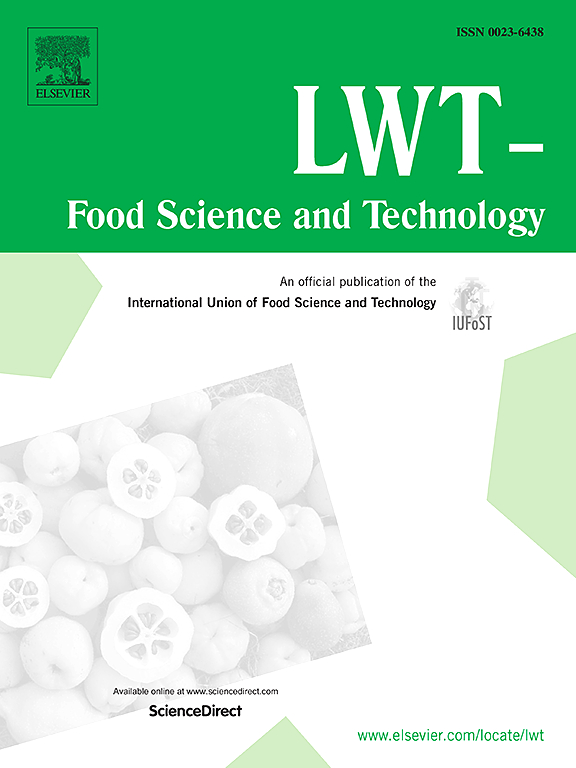转变植物性牛奶替代品,促进健康
IF 6
1区 农林科学
Q1 FOOD SCIENCE & TECHNOLOGY
引用次数: 0
摘要
植物性牛奶替代品并不总是符合营养标准,而且报道的重新配方努力也很弱。因此,有必要深入了解使这些产品更健康的潜力。本研究的第一个目的是分析这些产品的营养和成分质量。在这里,我们对66种植物性牛奶替代品进行了在线市场盘点,根据更新的雷纳评分计算了它们的营养评分,并分析了它们的添加剂(数量&;类型)和加工/未加工植物来源的比例。我们的第二个目标是确定影响产品营养和成分质量的因素。因此,我们研究了产品的营养、成分和价格特征之间的相关性。第三个目标是探索重新配方的潜力,使产品更健康。我们考虑了营养和成分值的现实临界值。我们发现,在分析的66种产品中,几乎有一半的产品营养质量差(营养评分为D),并且含有一到三种添加剂。作为解决方案,我们确定了可以降低这些产品的雷纳分数(- 12分)、总糖含量(- 8克/100毫升)、卡路里含量(- 36千卡/100毫升)、加工植物来源百分比(- 17%)和添加剂数量(- 3)的方法。本文章由计算机程序翻译,如有差异,请以英文原文为准。

Transforming plant-based milk alternatives for better health
Plant-based milk alternatives do not always meet nutritional standards, and the reported reformulation efforts are weak. Therefore, there is a need for insight into the potential of making these products healthier. The first aim of this study was to analyse the nutritional and compositional quality of these products. Here, we conducted an online market inventory of 66 plant-based milk alternatives, calculated their Nutri-Scores based on updated Rayner's score, and analysed their additives (number & types) and proportions of processed/unprocessed plant sources. Our second aim was to identify the factors influencing the nutritional and compositional quality of the products. Therefore, we examined the correlations between the nutritional, compositional, and price characteristics of the products. The third aim was to explore the potential for reformulation to make products healthier. We considered realistic cut-off levels for nutritional and compositional values. We found that almost half of the 66 products analysed were of poor nutritional quality (Nutri-Score of D) and contained one to three additives. As solutions, we identified approaches that could reduce the Rayner's score (−12 points), total sugar content (−8 g/100 ml), calorie content (−36 kcal/100 ml), percentage of processed plant sources (−17 %), and number of additives (−3) of these products.
求助全文
通过发布文献求助,成功后即可免费获取论文全文。
去求助
来源期刊

LWT - Food Science and Technology
工程技术-食品科技
CiteScore
11.80
自引率
6.70%
发文量
1724
审稿时长
65 days
期刊介绍:
LWT - Food Science and Technology is an international journal that publishes innovative papers in the fields of food chemistry, biochemistry, microbiology, technology and nutrition. The work described should be innovative either in the approach or in the methods used. The significance of the results either for the science community or for the food industry must also be specified. Contributions written in English are welcomed in the form of review articles, short reviews, research papers, and research notes. Papers featuring animal trials and cell cultures are outside the scope of the journal and will not be considered for publication.
 求助内容:
求助内容: 应助结果提醒方式:
应助结果提醒方式:


